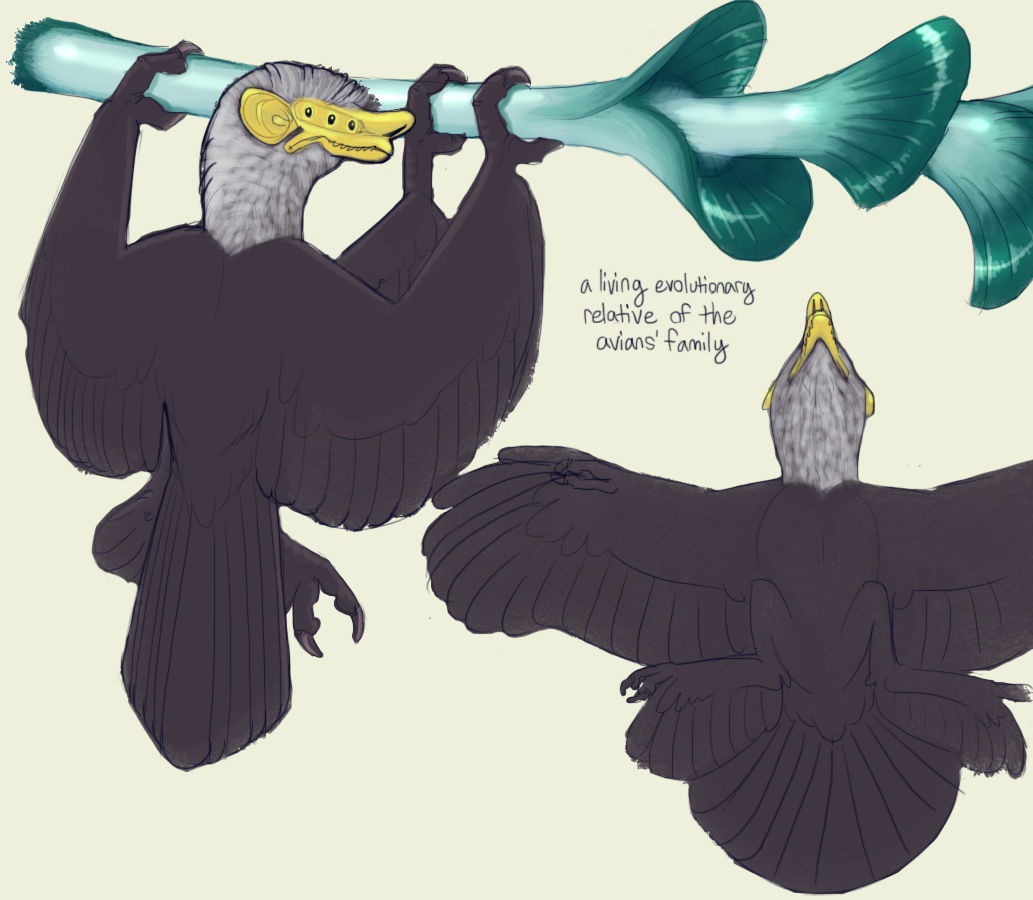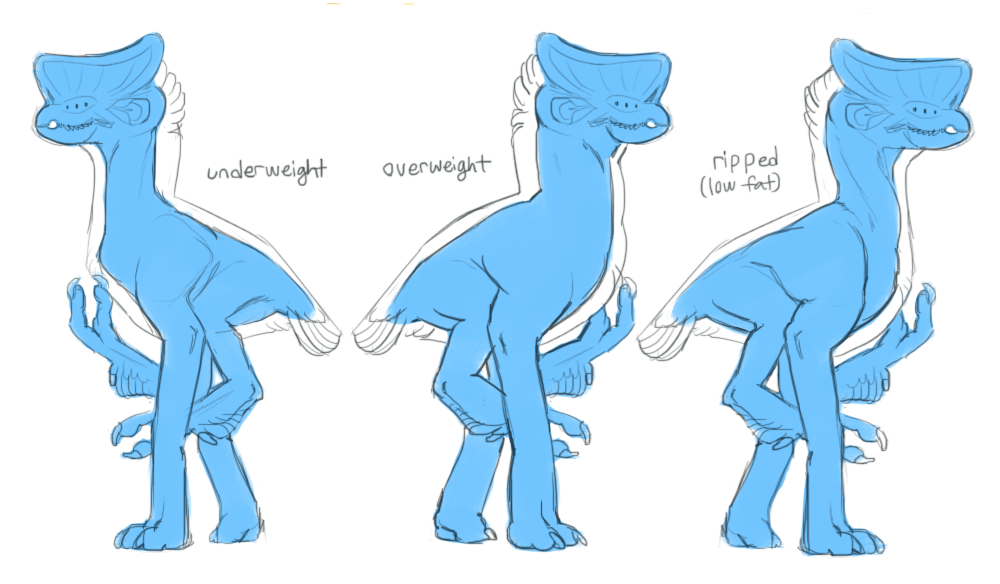Avians are from an oceanic planet, where endothermic, feathered flyers are one of the most successful land-based lifeforms. Since land is limited to a scattering of small islands, the feathered flyers can travel the distances between dry land more easily than flightless or exothermic creatures.
The evolutionary ancestors of the sapient genus of avians are tree climbing critters with grasping hands on both their fore and back limbs. In the sapients, the hindlimbs are specialized to a point where they are used almost entirely for grasping, tool manipulation, and launching into flight. The dramatic speciation of the sapient avians was caused by hundreds of thousands of years of separation by ocean, and fostered by a lack of traumatic events like Earth’s ice age or K-Pg asteroid impact to wipe any of them out. Besides the five major species, there are many subspecies that can successfully breed with one or more of the major species.
Avians have no vertebrae past their lumbar spine, their pelvis is comparable to a frog’s. Although some of the avian species have tails, they’re much less dexterous than an Earth bird’s. The muscles controlling the tail fan are attached to a knob at the end of the pelvis. Their hooked “beak” is actually two tusks, which continuously grow from roots in the skull. They have to be filed down to prevent overgrowth. Since avians don’t chew food, they have a gizzard organ to do the grinding for them. Normally small smooth stones are swallowed to fill the gizzard, but one can also buy ‘designer gastroliths’ as novelties and souvenirs. These are usually non-toxic semi precious stones, but are sometimes (inadvisably) made from cast metal or plastic.
Avians have a bisex reproductive system with an egg-laying sex and an egg-carrying sex, usually referred to in English as brights and duns respectively.

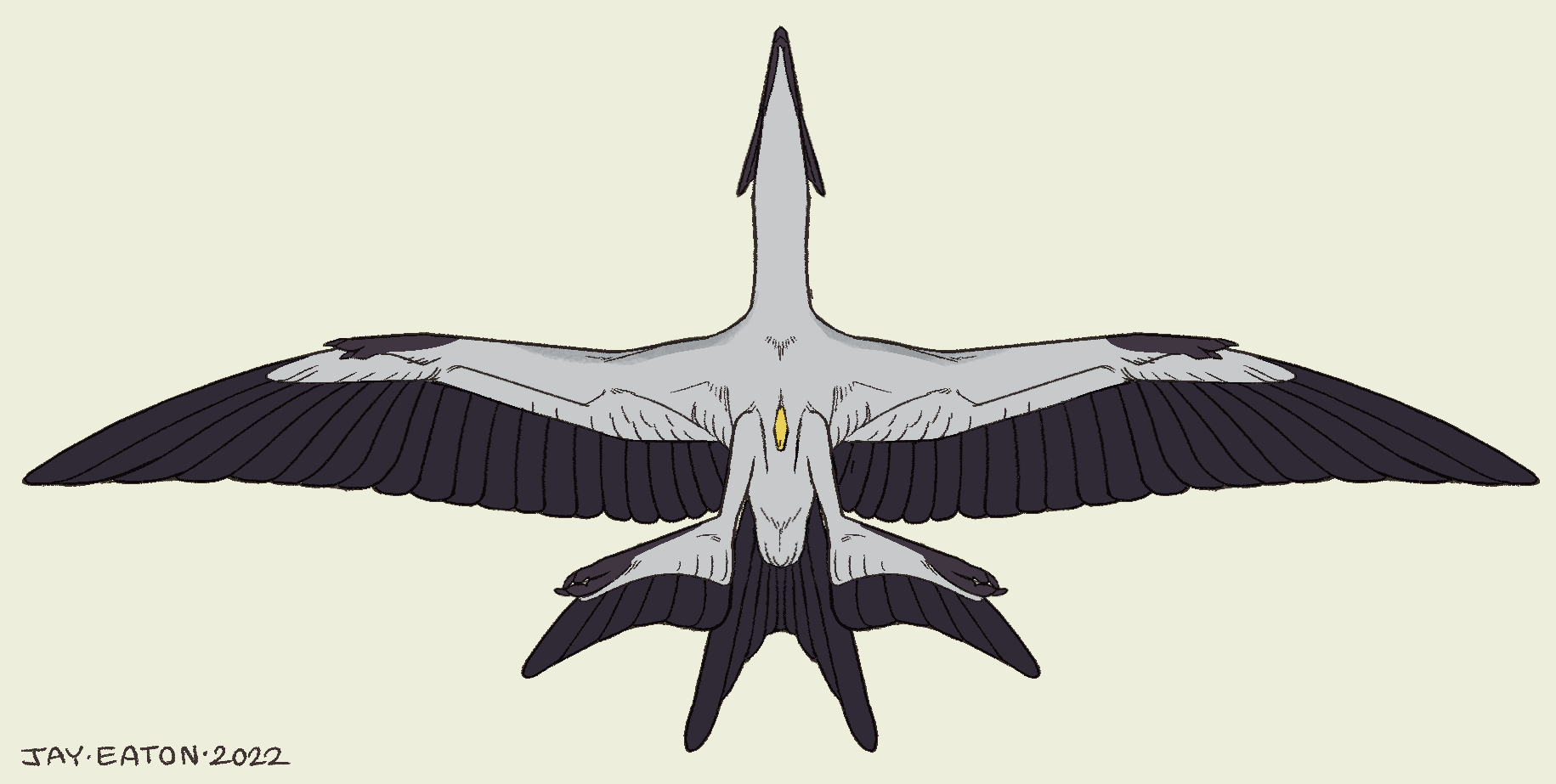
Avg. height brights: 104 cm
Avg. height duns: 112 cm
Wingspan: 2 meters
Population: Roughly 12 billion
Slender avians with long ears, pointed wings like a gull and a tail fan with two points like swallow. The tail is not a true vertebral tail like an earth bird, the fan is controlled by a set of muscles attached to a knob at the end of the pelvis. They are the only living species in the genus with a tail fan in both sexes. Skimmers are by far the most populous avian, both on their homeplanet and in space, but their native range is on the Tiiliitian archipelago and many scattered islands throughout their planet's northern hemisphere.
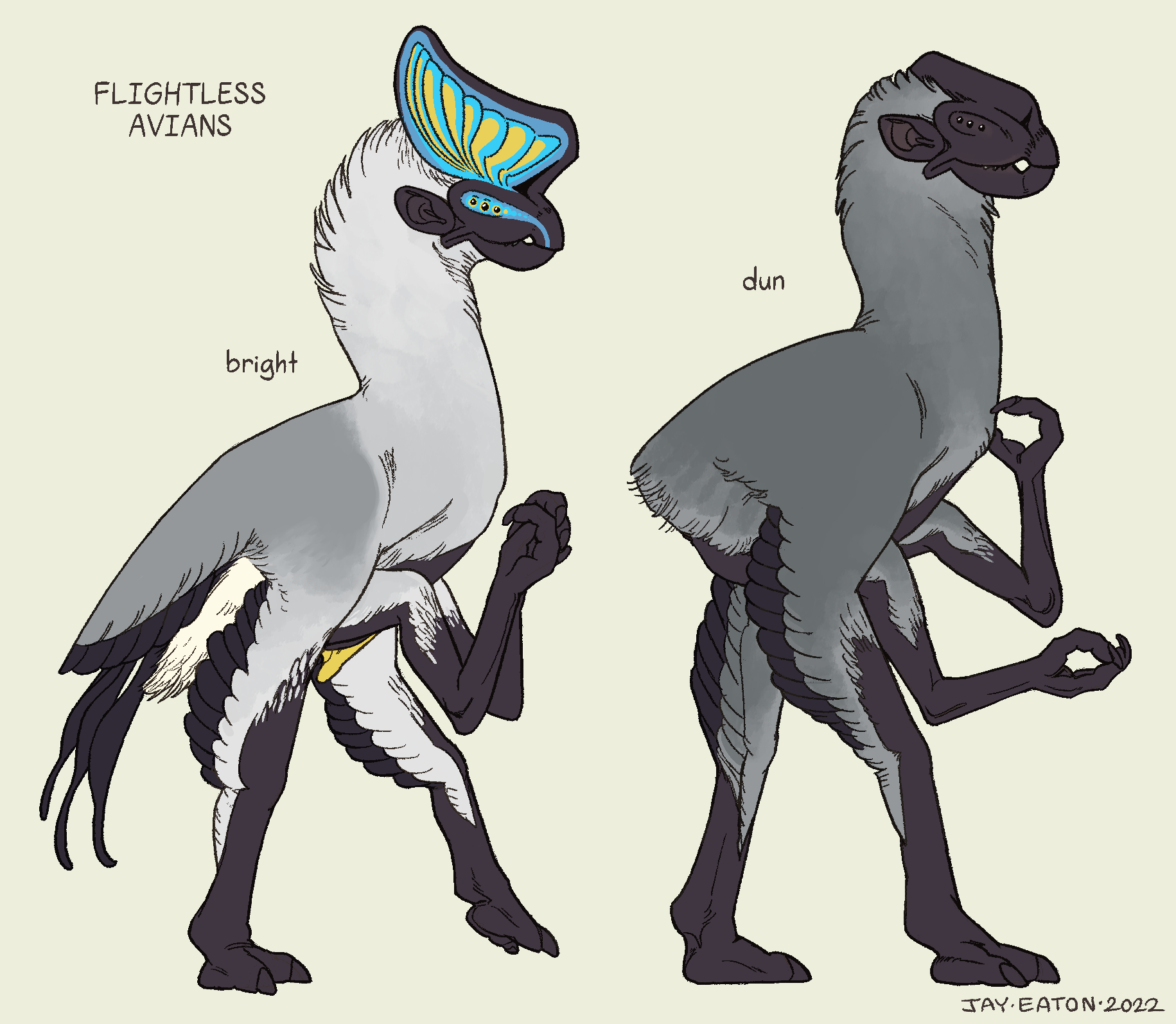
Avg. height brights: 150 cm
Avg. height duns: 160 cm
Population: Roughly 5 billion
Tall, thick boned avians with a decorative tall fan in the brights. They lack the third metacarpal bone that supports the primary wing feathers in their flying cousins, and have greatly reduced secondary and tertiary feathers. Though they lack wings, they are much faster and more agile than other avians on the ground. Their native range is the Hotsuuv continent, the largest landmass on their homeplanet.
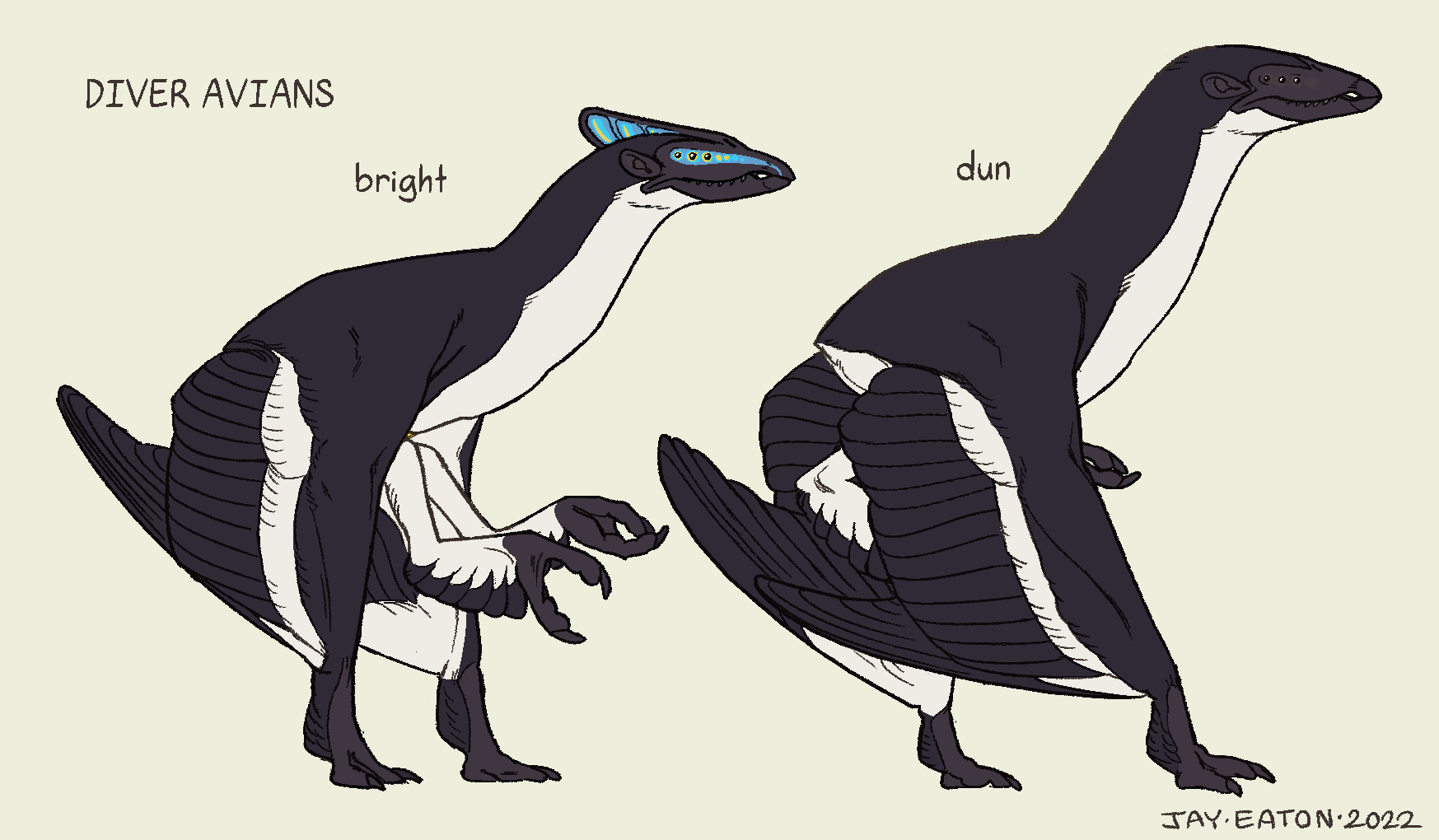
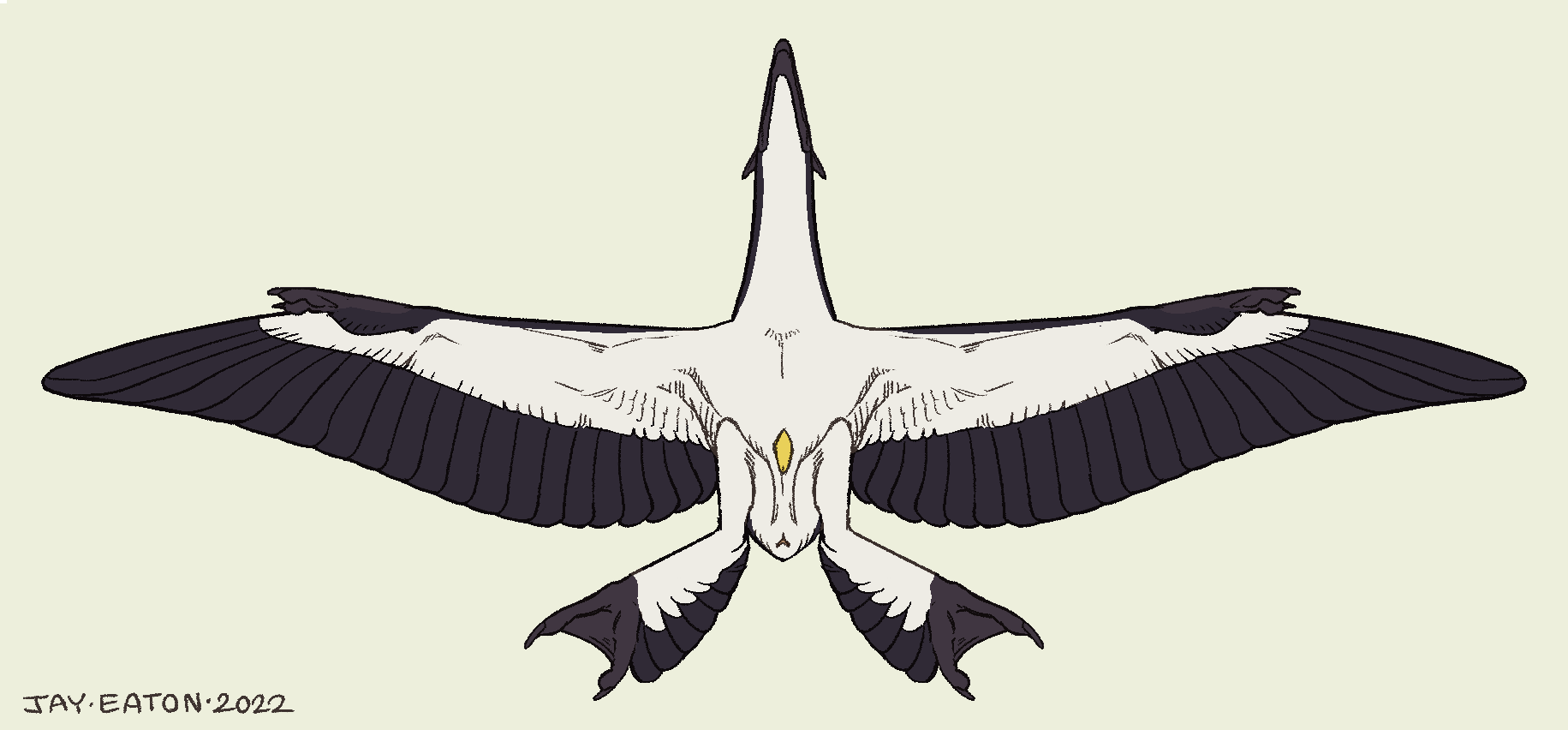
Avg. height brights: 84 cm
Avg. height duns: 92 cm
Wingspan: 1.6 meters
Population: Roughly 4 billion
Stocky black and white avians with short pointed wings like a cormorant. As their name implies they are adept swimmers, and have much denser, oily body feathers than their cousins. Their native range includes the Southern Pole landmass and many scattered islands throughout the southern hemisphere.
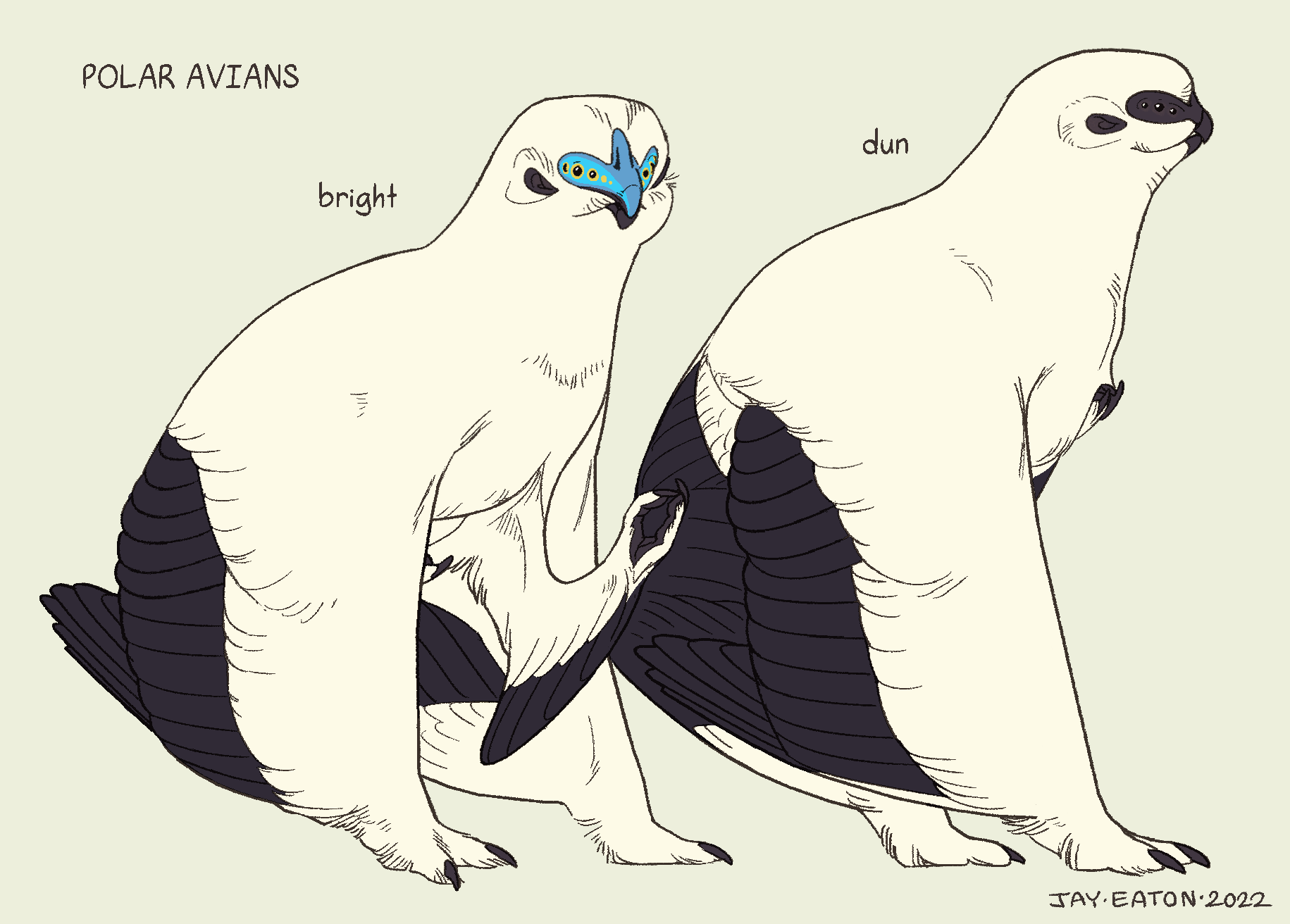

Avg. height brights: 122 cm
Avg. height duns: 130 cm
Wingspan: 2.4 meters
Population: Roughly 3.2 billion
Large fluffy white avians with broad silent wings like an owl. Their native range is the Northern Pole continent.
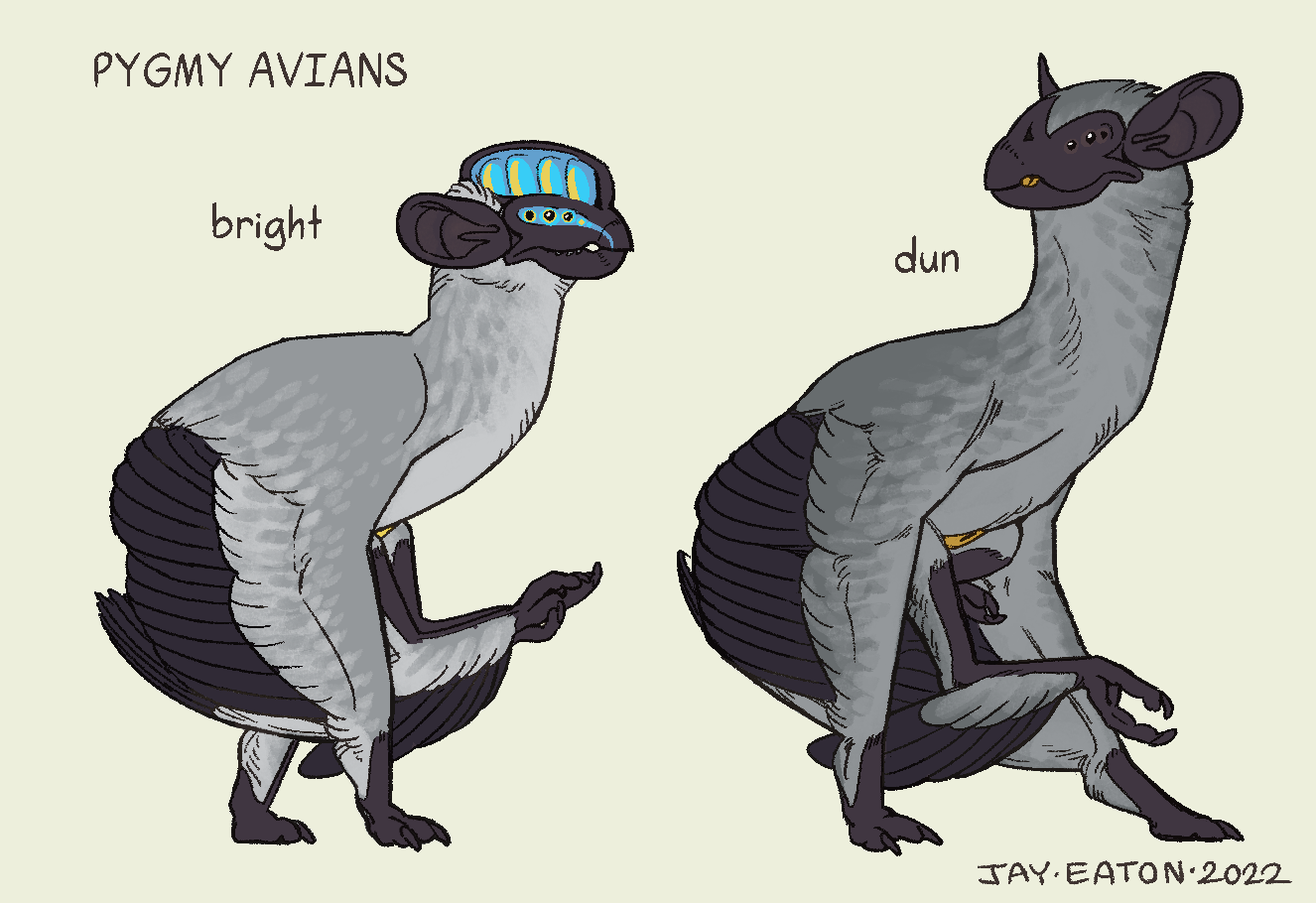
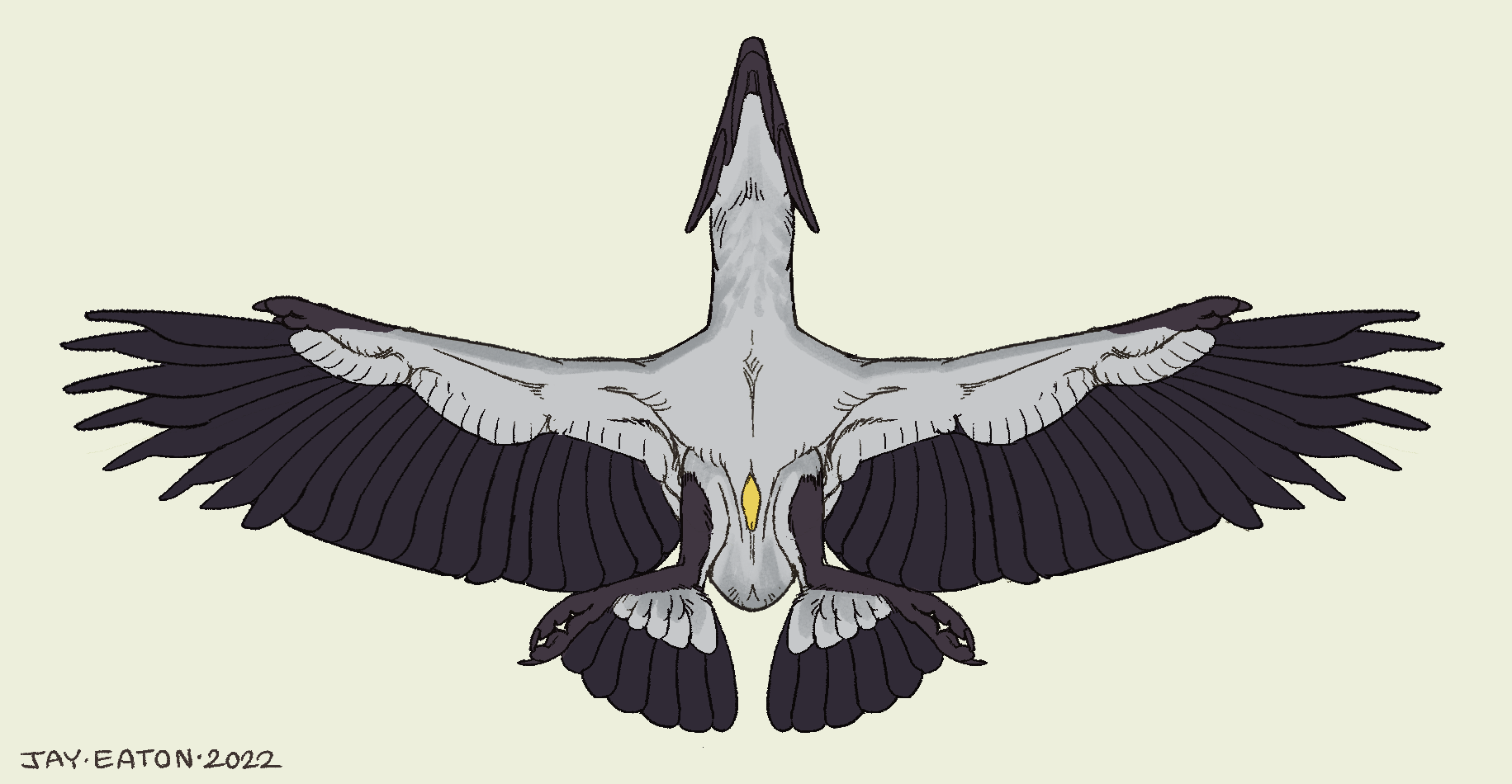
Avg. height brights: 68 cm
Avg. height duns: 72 cm
Wingspan: About 1.2 meters
Population: Roughly 5 million
Diminutive avians with broad notched wings like a sparrow hawk. Their native range is a chain of 5 small tropical volcanic islands in the Northern hemisphere.

Because of their watery planet, fossil records are extremely difficult to track and land based ones are often compromised by constant high density development and redevelopment. The avian family tree may contain other extinct members that have been lost to time.
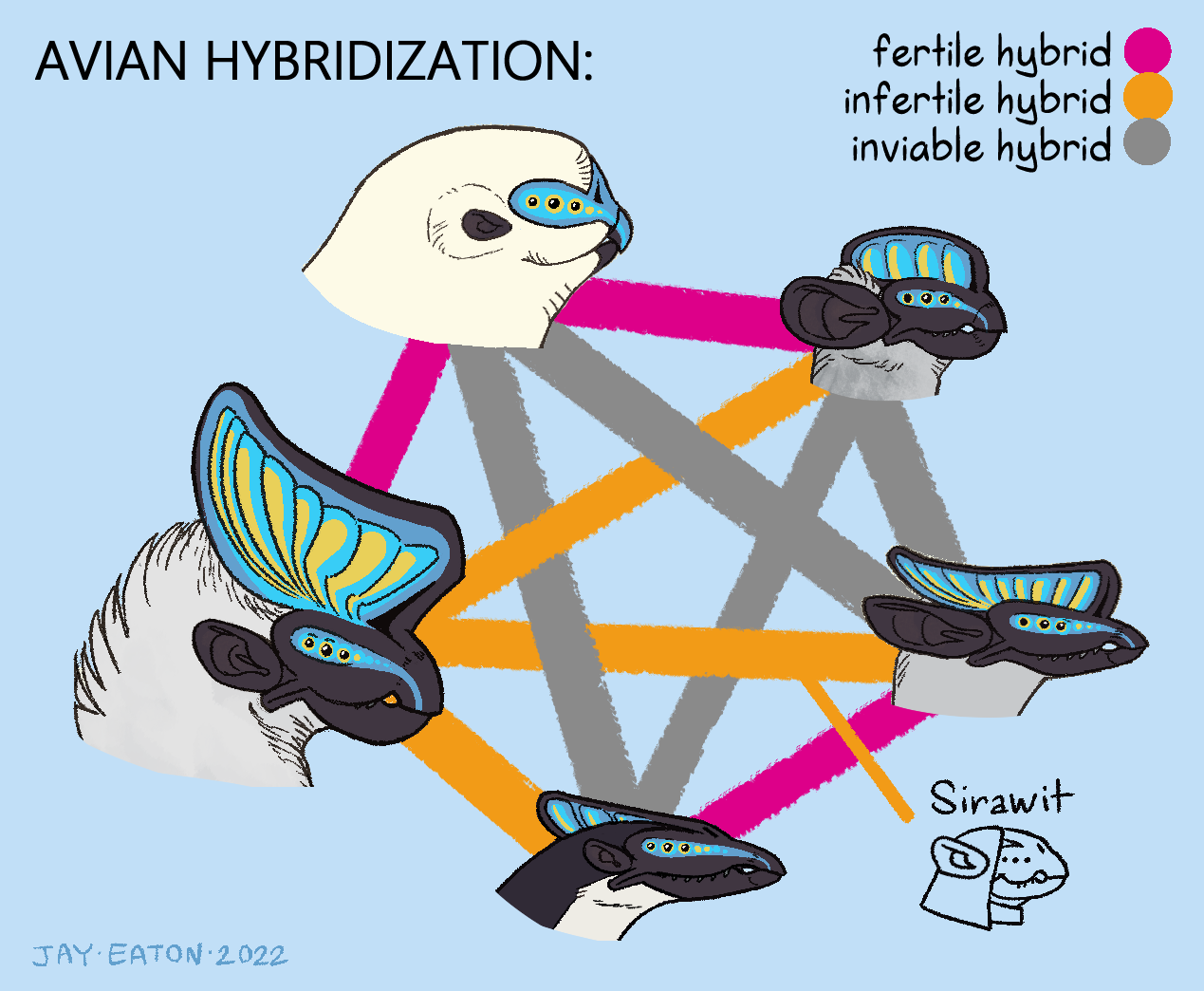
Of the 5 species, only 6 viable hybrids can be made, and of these hybrids only 3 are fertile and capable of producing successful offspring, though not necessarily with their own type of hybrid. Sirawit is a skimmer/flightless hybrid and is thus infertile. Good thing they're not interested in kids or the making thereof.
Avians have lungs more similar to bats than birds, with a large pair of aveolated sacs that they breathe into and out of with a diaphragm. Although the bones of the flying species have a light, gas filled internal structure that is mostly absent in their flightless cousins, they are unconnected to the respiratory system.
The vocal setup of avians is far more similar to Earth birds, though, with a syrinx structure at the point where their bronchial tubes join together, giving them two distinct pairs of vocal cords. This allows avians to speak two pitches at the same time, and control the slide of those tones independently. Despite lacking a tongue and lips as dextrous as a human or centaur’s, they are able to approximate many foreign consonants with muscular control over the shape of their trachea.
The crest of bright avians is mostly hollow but contains a long loop that they can use to make a loud honking sound. The intensity of this honk varies between species and tends to correlate with how intensely avian brights compete with each other and “display” while seeking the attention of duns. Flightless avians have by far the loudest display honk, and polar avians and divers have the quietest.
Avians, being from a planet unusually poor in many metals and unusually abundant in cobalt, evolved with a cobalt-based respiratory pigment in their blood. The molecule is relatively weak and loses its ability to effectively bind oxygen about every 30 hours, requiring the blood cells to be “refreshed.”
This process takes place in a large pair of organs called the hepatokidneys, which cycle through the entire blood system on a daily basis, scrubbing it of toxins, expired respiratory pigment, and defective cells. This process among other physiological quirks gives avians a rapid metabolism and an astonishing resilience to many ingestible poisons and toxins, which are rapidly neutralized and filtered out by the hepatokidneys. Their fast metabolism requires them to eat more calories more frequently than the other sophots, though.
Avians possess a beak-like pair of frontal tusks that continuously grow and must be worn or filed down, but these are mostly for object manipulation. The rear of their mouth possesses rows of pointed rear-facing teeth and a spiny tongue, which help prevent slippery food from escaping. Most avians have a highly pescatarian or insectivorous diet, so this set up likely helped with prey capture in their ancestors. Flightless and pygmy avians, who are historically more omnivorous than their relatives, have fewer and blunter teeth.
Avians do not have a mouth setup that allows them to effectively grind their food, and generally they swallow food items whole or in chunks. Avians will occasionally eat small rocks and grit as a digestive aid, which sit in their gizzard and help break apart food after swallowing.
Avians have some of the most extreme sexual dimorphism of the sophonts. Infants are born with little differenciation besides an undeveloped ovipositor in brights, and remain relatively similar until puberty at around 8-10 Earth years of age.
At puberty, duns experience a growth spurt, muscle development, and the maturation of their gonads and womb-pouch. They also develop a deeper voice than brights.
Brights top out in height during puberty but begin the growth of their boney crest, some species shed into lighter adult feathers, and all start their estrus cycle; where they seasonally develop a clutch of eggs. Crest growth takes about 5 years to finish and generally stops at 12-15 years of age. The crest is a hollow structure that can be used to magnify the voice for courtship "honks," though its air capacity varies between avian species. Flightless avians have the loudest honk, and polar avians the quietest.
Avian eye structure is relatively simple, with a lens and retina inside the globe of the eye and an external sphincter muscle in their eyelid that functions to both control light input and focus, similar to the iris sphincter in human and centaur eyes. Their individual eyes have poor resolution, with definition increasing the more eyes they have focused on an object. The eyes can swivel semi-independently, usually with the front four pointing down the beak and the rear two pointing outwards toward the rear. This unusual setup gives them binocular or even trinocular vision in almost every direction around their head, and incredibly sophisticated depth perception despite the weakness of their individual eyes.
Avians have tetrachromatic vision and possess color-sensitive retina cells that detect wavelengths in the ranges of ultraviolet, blue, green, and red.
Overall avians do not have significantly better hearing than humans and are actually poorer at perceiving some high frequencies. Larger eared species do have better directional focus and distance hearing than shorter-eared avians, but ear length and mobility seems to have more to do with expressiveness than function and can be compared to a human eyebrow.
Avians sleep less on average than other sophonts, about 4 hours for every one of their 21 hour days. They are primarily diurnal.
Puberty begins seasonal sexuality for avians, a cycle that is somewhat tied to seasonal enviromental triggers, and somewhat tied to an internal clock that adjusts itself based on the social cues of other avians beginning their cycle. Different colonies of avians in space and on the homeplanet can often become desynced from each other, but an outgroup avian living in a place with a different cycle for more than a year usually causes them to sync with the local populace. Slow and rapid sexual cycles or the absence of cycles are commonly recognized disorders among avians.

